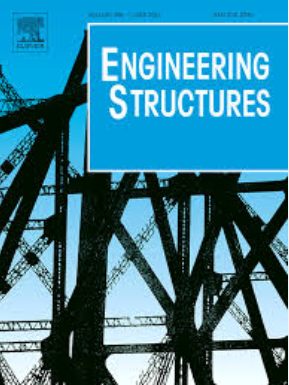Enhancing flexural performance of rubberized concrete beams through incorporation of rice husk ash as cement replacement
IF 5.6
1区 工程技术
Q1 ENGINEERING, CIVIL
引用次数: 0
Abstract
The quest for sustainable concrete production emphasizes human health and environmental safety while significantly reducing CO2 emissions associated with traditional cement manufacturing, which is vital in combating climate change. Moreover, the novel application of by-products with pozzolanic properties not only diminishes environmental waste but also enhances the performance of concrete constructions. This research studies the sustainable application of crumb rubber (CR) and rice husk ash (RHA) in reinforced concrete (RC) beams. The research proposes a sustainable approach to mitigate the decreased flexural capacity in rubberized RC beams by incorporating rice husk ash (RHA) as a substitute for cement. Nine different concrete mixtures were designed with varying substitution ratios of RHA and CR as partial replacements for cement and fine aggregate (FA), respectively. The substitution ratios considered were 0 %, 10 %, or 20 % for RHA and 0 %, 5 %, or 10 % for CR by FA. Nine simply supported RC beams were cast and tested. The findings demonstrated that substituting cement with RHA at an ideal replacement ratio of 10 % enhanced the concrete strength, whereas the use of CR had a detrimental impact. The flexural capacity, stiffness, and toughness of the examined beams improved with the inclusion of RHA up to 10 %; they then declined with the inclusion of 20 % RHA but continued to be higher than those of the control specimen. The exploration of concrete mixture substitution ratios highlights a compelling balance between performance and sustainability. According to the experimental results, the best substitution ratio for the concrete mixture is a combination of 10 % RHA and 10 % CR, which only slightly reduces the ultimate load by 3.1 %. Finally, the experimental outcomes were compared with the predicted results of ACI 318–19 approaches.
求助全文
约1分钟内获得全文
求助全文
来源期刊

Engineering Structures
工程技术-工程:土木
CiteScore
10.20
自引率
14.50%
发文量
1385
审稿时长
67 days
期刊介绍:
Engineering Structures provides a forum for a broad blend of scientific and technical papers to reflect the evolving needs of the structural engineering and structural mechanics communities. Particularly welcome are contributions dealing with applications of structural engineering and mechanics principles in all areas of technology. The journal aspires to a broad and integrated coverage of the effects of dynamic loadings and of the modelling techniques whereby the structural response to these loadings may be computed.
The scope of Engineering Structures encompasses, but is not restricted to, the following areas: infrastructure engineering; earthquake engineering; structure-fluid-soil interaction; wind engineering; fire engineering; blast engineering; structural reliability/stability; life assessment/integrity; structural health monitoring; multi-hazard engineering; structural dynamics; optimization; expert systems; experimental modelling; performance-based design; multiscale analysis; value engineering.
Topics of interest include: tall buildings; innovative structures; environmentally responsive structures; bridges; stadiums; commercial and public buildings; transmission towers; television and telecommunication masts; foldable structures; cooling towers; plates and shells; suspension structures; protective structures; smart structures; nuclear reactors; dams; pressure vessels; pipelines; tunnels.
Engineering Structures also publishes review articles, short communications and discussions, book reviews, and a diary on international events related to any aspect of structural engineering.
 求助内容:
求助内容: 应助结果提醒方式:
应助结果提醒方式:


